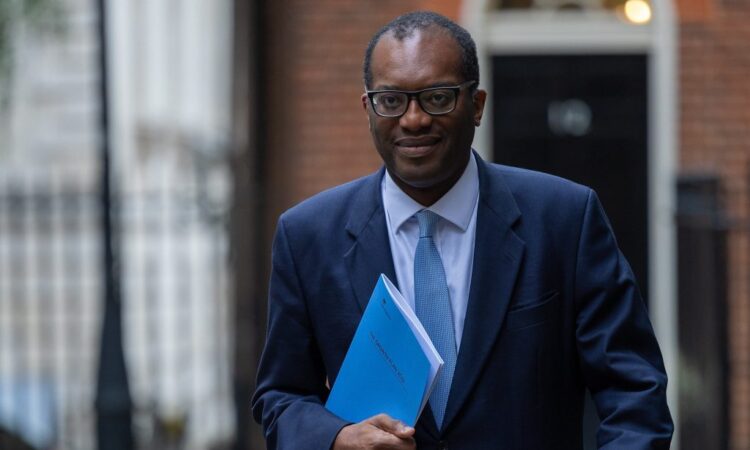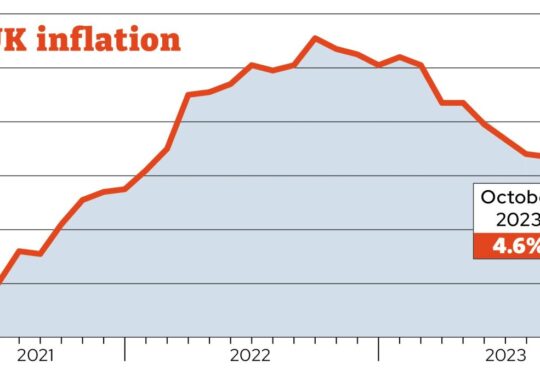
The foreign-exchange and bond markets took fright at the Chancellor’s plan to run a low tax regime funded by extra borrowing. He was unlucky to an extent to be headed in the opposite direction to other G7 countries just at the time when international bond markets had become jittery as covid-era central bank support for bond markets is ending. Although his plans mainly involved avoiding previously planned tax rises rather than actual tax reductions, his famous arrogance led him to ignore warning signs, while sacking the Treasury permanent secretary and side-lining the OBR. His own considerable ability as an author of impressive books, including a history of monetary policy, counted for little in face of global financial market hostility.
His ideological and iconoclastic character encouraged him to introduce his new free-market strategy at top speed, ignoring the worsening international context in bond markets. In doing so he has precipitated a situation in which foreign and domestic buyers of UK government bonds went on strike, demanding much higher returns to buy in the bond markets. The associated surge in long-term interest rates immediately brought unpredicted consequences and not only for the pound. The end of the long period of rock-bottom interest rates was always going to be rough but such a sudden ending raised interest rates more than necessary and made it an economic crisis. Uncertainty on how far interest rates would rise led smaller banks to suddenly withdraw fixed-rate mortgage offers, and led to all banks increasing rates for those mortgage offers still open. Pension funds faced disaster. Unbeknown to non-specialists, pension-fund asset managers had been hedging their future liabilities and borrowing to make a make a bit more money through buying additional bonds. The sudden fall in the value of bonds, associated with the higher interest rates, meant they faced sudden margin-calls for cash. This led them to raise cash by dumping bonds, driving bond prices even making the situation worse. The temporary mayhem facing the pension funds led the Bank of England to perform a screeching U-turn to buy a huge volume of existing government bonds instead of selling them as it had previously announced. Just to cap off a bad week the IMF got above itself and quite unnecessarily decided to criticise the UK, including for increasing inequality (which is of course none of its business).
With foreign-buyers of bonds running for the hills, the foreign exchange markets performed their usual over-reaction, marking the pound down to 1.03 US dollars – a reduction from 1.20 dollars only a month ago and 1.30 dollars six months ago. Sterling subsequently recovered from the panic attack but languishes in the 1.12-1.14 range against the dollar. Much of the fall is due to the global rise of the dollar due to high US interest rates, but not all. The pound fell 5% against the Euro in the run-up to the mini-budget and even after the recovery from the panic, remains at that level. Bond interest rates, and the mortgage rates associated with them, remain high at 5-6%. Rising mortgage rate were bound to follow the bank rate which last week rose to 2.25%, but mortgage rates have risen further and faster following the mini-budget. Liz Truss’s rather feeble attempts to blame all of this on global trends do little to support her already fragile reputation on economic issues.
In poking this hornet’s nest, the Chancellor has probably ruined any prospect of a general election victory in 2024 even if the bond and foreign exchange markets have over-reacted to what, after all, has been a minor actual reduction in taxes. What happened was principally a decision not to introduce the tax rises which Rishi Sunak had planned in order to reduce the high debt levels occasioned by the pandemic. Kwasi Kwarteng’s mini-budget keeps borrowing high, and the overall level of government debt rising, potentially without limit. His plan was that lower taxes, plus some useful supply-side measures, would lead to higher economic growth. This would in turn generate enough tax revenues to get government debt on a downward trajectory. Unfortunately, no-one including the OBR (Parker and Giles, Kwarteng faces struggle to sway OBR, FT Friday Oct 1st) believes that these measures will raise the currently dismal rates of economic growth, never mind achieving Kwarteng’s ambition to restore growth to the 2.5% per annum of the pre-banking-crisis era.
All of this occurred in the context of the Chancellor’s necessary (and non-ideological) decision to cap energy prices with large subsidies for the energy companies. This gave another huge, if temporary, boost to government borrowing. Although UK government debt, at 85% of GDP, is not high by G7 standards, it is likely to rise quite rapidly while other countries were reducing their own debt levels. For the buyers of UK bonds, the question was why should they buy ten or twenty-year bonds when the UK government was about the flood the market, and inflation (which undermines the value of bonds) could remain high.
The bank of England is widely expected to raise its base rate above the current 2.25% and when it does bond prices are likely to fall further, diminishing the rationale for buyers to purchase bonds now unless the Treasury offers juicy and expensive rates of return on new bonds. It would help if the bank of England resisted calls for higher base rates, even if this temporarily led to further falls in the pound as investors preferred the higher interest rates available in the USA. If, as the OECD and others expect, inflation falls rapidly next year as global raw material prices fall, the pressure for higher interest rates will diminish. Other countries, now including Germany, are also borrowing to offset energy costs so the UK may look less out of line.
Has the economic strategy changed?
Writing on October 8th it currently looks as if the Government has largely abandoned its strategy of borrowing to keep taxes low. The PM stressed in her Tory Conference speech that hers was a government of fiscal responsibility. The Treasury and the OBR are to clarify in a few weeks how the Government proposes to soon reach a point when public sector debt will begin falling as a proportion of GDP. Discussions are ongoing on public expenditure cuts to reduce borrowing and a proposal to cut the real value of benefits is raising opposition among Tory MPs.
With a swerve of the hips, worthy of a Welsh wing-half, the Chancellor has thus side-lined his strategy of promoting economic growth, (and extra tax-revenues) with low taxes. Instead the budget will be balanced, at least in the short-term, by cuts in spending. In other words, a good-old Tory low tax/low spend regime. The problem with this this that the public services are in a wretched state after a dozen years of austerity and a pandemic. A huge backlog of NHS operations and reduced access to GPs, years of backlog in criminal lawcourt cases, police forces which fail to investigate burglaries, persistent pressures in adult social care and prisons, polluted rivers, all suggest a need for more spending rather than less, even if reforms can generate some improvement within existing budgets. Cost cutting through the privatisation of service provision reach a dead-end in the collapse of Carillon and the renationalisation of East Coast railways. Within a context of substantial planned increases in defence spending, another bout of austerity seems bound to store up problems for future administrations. This emerging plan B, is thus likely to focus instead on cutting the real value of social security benefits and public sector wages. The problem here is the old Thatcherite conundrum, that critics will say that the Government believes that the rich need tax cuts to incentivise harder work or more enterprise, while the poor need benefit cuts. To say the least, this not the best way to appeal to red-wall voters and others who just want a well-run country without the poor having to resort to food banks.
What to do?
What should the Government now do? Doing nothing may be an option but the Bank of England’s emergency bond-buying spree currently lasts only until mid-October. It could be extended but, if not, long-term interest rates may rise again, although this time pension funds asset investors should have had time to protect themselves. Sterling may already have stabilised at around 1.12 dollars per pound. The pound has fallen 17% against the dollar this year but the Euro and other currencies have also fallen 13%. At some stage the dollar will begin to fall and most other currencies, including Sterling, will rise again but this may not happen for a year or more. Long-term interest rates and mortgage rates are likely to remain higher than in recent years and house prices may well fall. With global raw material prices now falling inflation will moderate as long as the Government stands up to beggar thy neighbour demands to fully match price rises from the RMT and other unions.
Some simple steps have already been taken, including retaining the 45% top rate of income tax and holding a meeting with the OBR. An OBR report in the next two weeks should say that low taxes will not lead to higher growth but its mandate is usually to assume the official policies will work (for instance on inflation targets) so it will be conflicted.
Reversing the main tax decisions is not an option since it would mean the end of the revolution and ignominy all round, although reversing the abolition of the 45% tax rate has been sensible. Even if Liz Truss still intends to be a PM able to take hard decisions, her MPs are keen on avoiding electoral suicide.
What seems likely is a mixture of all of these things. Some expenditure cuts will be announced in November’s spending review. Some tax reductions may be delayed by enough for the OBR to say that public sector debt will soon begin falling as a percentage of GDP. Continued freezes in income tax thresholds will also raise tax revenues at relatively low political cost, particularly if combined with delaying the planned 1p cut in the basic rate of income tax.
The Government is likely to keep its existing cuts in corporation tax and NI contributions and probably retains the hope that these will generate faster economic growth and revenues, even if expenditure cuts are also needed in order to sooth financial markets. Even if we believed this strategy would work (which I do not) it would have needed a run of years to prove its effectiveness but looks unlikely to get this. More positively for the Government, if spending reductions can be delayed, there is the chance of a small Keynesian bounce in GDP in 2024 just before the next general election, allowing the Chancellor to claim his policies are working. If a bounce does occur it is likely to strictly temporary. My prediction based on modelling, is that the dismal low trend in productivity growth the strategy would soon return. The posited link between low taxes and economic growth is the key to the strategy, so let’s examine it in more depth.
A low-tax strategy would not work
The key to the Chancellor’s strategy has been an economic revolution with low taxes and supply-side measures leading to faster economic growth and hence an enhanced flow of tax revenues. The prioritisation of economic growth is the good news. It recognises a much under-acknowledged truth that the UK’s principal economic problem for a decade or more has been that economic growth and productivity have slowed to a crawl since the banking crisis of 2008/9. Before the crisis, real GDP per head had expanded at around 2.5% per head for many decades across a range of governments and chancellors. Since the end of that era in 2007, growth has been a measly 0.25% per annum, i.e. not much above zero. This difference is important. By 2021, GDP per head was 25% below that pre-crisis trend. This means that if the previous growth rates could have been maintained we would all be one third richer with much more money for the NHS, education, policing and courts and much else. The sad state of many of our public services is due to this economic slowdown.
This dismal situation showed no sign of ending, and worse there is little evidence that the economics profession or anyone else really understands why growth has evaporated. It is a problem shared with North America and much of Western Europe where growth has similarly slowed. Waking up to the problem has come late but we should be glad that the awakening has come at last.
The Government’s intentions to get back onto a 2.5% per annum growth track are good, and its apparent self-confidence (at least until last week) would have been admirable if the diagnosis was correct. What was being attempted is Thatcherism Mark 2 in a hurry. The Thatcher beliefs that low taxes and a small state will enhance growth are being resurrected, even though taxes are already low and the state is relatively small.
Tax revenues are already not high by European standards. At 33% of GDP, they are well below both the 39% of Germany and the 40-46% range which includes France and Scandinavia. This is the case even though the UK has an NHS and funds more of healthcare than most other countries. Tax is similar to Canada which does have an NHS but higher than the USA (at 27%) which does not[1]. The significant thing is that economic growth rates are similar across these countries irrespective of tax rates. There is thus little evidence that long-term economic growth is correlated with low taxes within the range experienced by advanced economies. Nor does the UK or US experience inspire confidence. It is not generally realised that growth in UK GDP was slower after the Thatcher reforms compared with the preceding decades. Whatever else these reforms achieved they did not generate faster growth. Despite Jacob Rees-Mogg’s claim (BBC2 Newsnight September 21st) that Reagan’s 1908’s cuts stimulated growth in the USA there is no real evidence of faster growth in the USA over the 1980s compared with previous decades
In a long-term context the main evidence for sustainable faster growth relates to low company taxation which attracts foreign direct investment as companies relocate to avoid high taxes administrations. Most countries prefer to avoid tax-haven status and keep their corporation tax rates close to an international average of around 25-28%. Tax-havens like Ireland have attracted large flows of inward investment although much of this is now the global earnings of multi-national firms which flow through Ireland but have limited impact on Irish incomes. Low corporation tax has done much less to raise living standards in Ireland than many believe based on the Irish national accounts which are themselves hugely distorted by tax-shifting by multi-national firms.
The UK Government’s decision to maintain UK corporation tax rates at 19% rather than the previously planned 25% would, on my model-based calculations, raise company investment by a useful 1% per a year. This would increase companies’ total stock of capital by 2% over a decade, including an extra 60,000 jobs in new foreign-owned greenfield investments. Even though useful, this change would only increase the size of the total economy by an estimated extra 1% over an entire decade, well short of the Kwarteng target of more like 10-15%. We should also note that the Chancellor has not actually cut the tax rates for corporation tax and national insurance. Instead, he has merely cancelled planned rises. This will thus not accelerate economic growth above the level of recent years (when these tax rates were the same as now) but will instead avoid a small potential deceleration.
The originally proposed reductions in tax involved abolishing the 45% top rate of income tax and bringing forward a 1p in the pound reduction in the basic rate of income tax. These are calculated to add only minor amounts to GDP or public sector debt. This is as far as econometric modelling can get us. Whether there would be other less predictable impacts is hard to say. Reducing the top rate of income tax to 40% might attract some more high earners to the UK and in the long term may help the economy to grow but the evidence is weak. The reduction in the basic rate of income is likely to have only a short-term Keynesian effect.
Low taxes and incentives to work
If tax reductions were to lead to sustained growth, we should be able to observe this in the economic record but it is hard to see. Some believe that lower taxes increase incentives to work harder or longer and the remark about British workers being the worst idlers in the world in Britannia Unchained seems to suggest that Liz Truss accepts this even if she did not author the chapter in question. Very high relative wages do promote hard work as the long hours culture shows in several professional and financial services sectors. High pay rates for overtime also suggest that workers need high pay to induce them to work longer hours. On the other hand, as wages have risen over time, the number of hours worked per person has tended to fall. People value extra leisure alongside more goods and services. Gale and Samwick of the Brookings Institute (2016)[2] argue that while tax cuts raise the returns from work or investment, they also reduce the need to work or invest. While Germany has higher taxes than the UK its working week is the shortest in the world and its productivity is better than the UK.
If the impact of higher pay on hours worked is uncertain, can the same be said for lower taxes? It is a core belief of some right-wing economists that lower taxes encourage harder work. Patrick Minford, a Thatcher advisor in the 1980s, wrote in 1988 that cuts in higher-rate tax will lead to a substantial increase in work incentives. When Professor Chuck Brown was asked by Mrs. Thatcher to write a report on the gains from the Government’s reductions in income taxes he concluded that ‘there is little evidence to suggest that there will be any increase in short-run labour supply as a result of the cut in tax allowances or the cut in the basic rate of tax’ and that ‘most evidence suggests that the cuts in the higher rates of tax will not increase work incentives but will increase labour supply for those paying higher taxes’[3].
More recent research does support the idea that low taxes are associated across countries with longer working hours but the reasons for the link are not clear. Some authors believe that high taxes cause low paid workers to devote more time to home improvements or to work in the untaxed black economy. Others state that taxes are a small influence and point to the importance of strong trades unions in negotiating shorter working weeks and hence facilitating a preferred balance of work and leisure. The weaker unions of the USA and UK make such choices more difficult to achieve although there is evidence of a preference among some people for a ‘gig economy’ in which the balance of work and leisure can be flexible.
Mrs. Thatcher’s Chancellor, Nigel Lawson, was more targeted in asserting in his autobiography that ‘excessive rates of income tax destroy enterprise, encourage avoidance and drive talent overseas’. The emphasis on enterprise is particularly important. The Thatcher years did see a large increase in the formation of new businesses and the Thatcher government was strongly supportive of enterprise. Reductions in income taxes may have played a role in the upsurge in numbers of new businesses in the 1980s, but so did the high unemployment of those years. High interest rates at the end of the 1980s led to the demise of many of these new businesses, especially those connected with construction. Since this 1990s wipe-out, the stock of new businesses has risen steadily in a generally benign economic environment particularly with low interest rates since 2008. There is little direct evidence that changes in tax rates have played much role in promoting enterprise over this period. The Chancellor’ extension of support for new start-ups will help to promote small firms but the scale is not large enough to suggest that this will be of macro-economic importance.
Supply-side measures not big enough
Alongside the tax reductions, the Chancellor announced a range of supply-side measures, which are useful but too limited to make a big difference. The long-awaited announcement of tax concessions in investment zones will also be useful. There are currently 40 of these being negotiated within England with further zones to come in the devolved regions, in addition to the eight freeports already announced. Investment zones will have no business rates, stamp duty or employer’s national insurance contributions for new developments. Light touch planning controls will speed up development and the entire package will certainly be attractive to firms. When similar ‘enterprise zones’ were developed in the 1980s some benefits such as the absence of stamp duty were captured by existing landowners. Also, around half of the jobs created resulted from local moves rather than from foreign firms, or from domestic business which would not have otherwise existed or not at the same size. Although numerous, the new zones are likely to be too localized to be of macro-economic importance, but if they did work better than before they could be scaled up.
Reforms to planning regulations for major infrastructure and energy projects are long overdue and will certainly accelerate growth but the tension between environmental concerns and new housing or commercial development will remain strong especially among Tory voters. The first new reservoir in England for three decades is currently meeting determined opposition in Lincolnshire. The next planned for Cambridgeshire will be lucky to escape the same fate.
Minimum service levels to prevent damaging strikes will be welcomes by many but with generally weak unions, especially in the private sector, strikes have not been a significant impediment to economic growth or high productivity. This could change as high inflation persuades unions to attempt to protect their members from falling living standards but this is likely to be a passing issue once inflation subsides as most commentators expect that it will.
An extra £0.5 billion for innovation and technology start-ups is useful but relatively small scale. Our diminished manufacturing base provides relatively little to build on but this is of course a move in the right direction and along with existing schemes should be studied for potential scale-up. Similarly, extensions to the scope or time-periods for investment allowances, the enterprise and seed enterprise investment schemes and VCTs all help and send signals about the Governments intention to help entrepreneurs to succeed. Other countries do take similar measures so it is important for the UK to match competitors, but to accelerate growth in a context of low growth in international trade, measures are needed to get ahead of competitors and not just to keep up.
Conclusions
The Government’s strong focus on faster growth should make a difference but it is unlikely to be sufficiently large to prevent growing public-sector indebtedness. In the 1980s the encouragement of enterprise and a similar focus of growth did create a sense of economic expectation which did lead people and firms to invest. It is hard though to pull off the same trick twice. The deregulation of finance in the 1980s led to a huge expansion of private-sector borrowing but debt levels rose to levels which cannot now be further expanded.
The most successful of the Development Corporations, at Canary Wharf, developed on the back of a further deregulation of City financial markets in the big bang of October 1986. Business regulations are already the lightest among major OECD economies. Labour regulations arealso among the lightest. Any substantial move towards Singapore levels of regulation is likely to meet the stiffest of opposition and in fairness are not being proposed. The best we can expect from the measures that have been announced is a small addition to annual growth. A short-term boost to growth in 2024 is quite likely and will help Tory electoral prospects, but beyond that continued slow growth beckons.
The policies of the 1980s and 1990s encouraged a decline in manufacturing greater than in other advanced economies and the conversion of the UK to a predominantly service economy. Unfortunately, service sectors tend to have much less scope for growth in productivity and without a large manufacturing sector we lack a basis for rapid growth in both investment and R&D. The good news is that a depreciated currency makes UK firms more competitive as long as wages do not rise too much. The minimum wage in parts of China is now £4 per hour which is equal to the UK minimum wage for young people. We are now getting close to the level at which UK firms can compete with China in producing a wide range of goods. As always, we will do best if what we produce is high value goods and services generated with a high-skilled and well-paid workforce. The need for R&D, innovation, enterprise and skills remain important. A better balance of goods and services in our economy will help to achieve this. A more competitive currency will help but much more is needed in promoting R&D, innovation, skills and support for advanced technology like batteries or nuclear power. Relying on low taxes to do the job risks wasting valuable time.
[1] It is difficult to measure government spending on healthcare in the USA partly because it is shared between federal and state levels and is delivered through a range of channels including Medicare. Medicaid, health entitlements for current and retired government employees and state-level public health initiatives. It may be that together this expenditure is proportionately as large as the NHS in Britain.
[2] Effects of Income Tax Changes on Economic Growth (brookings.edu)
[3] Will the 1988 Income Tax Cuts Either Increase Work Incentives or Raise More Revenue? on JSTOR







